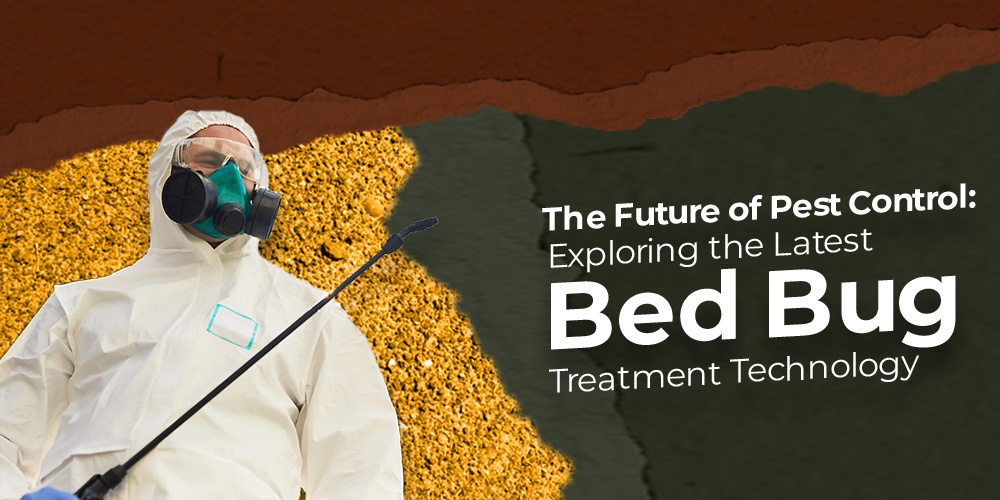Why are bed bugs still such a stubborn problem in our high-tech world? The answer lies not in surrender but in innovation. Considering these new technologies, it's essential to understand why such innovations are needed. Bed bug infestations have escalated, affecting residential and commercial settings. These pests have resisted traditional pesticides and have the uncanny ability to spread unnoticed.
In light of these challenges, exploring innovative solutions that can address resistance and environmental concerns is crucial. With that, let’s highlight the latest developments in bed bug treatment technology, emphasizing the advances shaping the future of pest control.
The Bed Bug Dilemma
Bed bugs present a formidable challenge in pest control, mainly due to their unique adaptations and behaviors. Combatting these pests requires understanding and addressing the following key challenges:
- Their remarkable resilience to traditional pesticides allows them to withstand treatments that eliminate other pests.
- The ability to spread unnoticed, as they can easily hitchhike on luggage, furniture, and other personal belongings, facilitating rapid and stealthy infestations in new locations.
Shift Toward Non-Chemical Methods
Traditional chemical treatments for bed bug control raise significant environmental and health concerns. The following are the environmental and health concerns associated with such treatments:
- Potential harm to non-target species, affecting biodiversity.
- Risk of chemical residues in the environment, leading to pollution and ecosystem imbalance.
- Long-term pest exposure affects human and pet health, including allergies and potential risks.
In contrast, non-chemical technologies such as heat treatment, steam cleaning, and vacuuming provide a safer and more effective alternative for eliminating bed bugs without the associated risks.
Cutting-edge Technologies in Bed Bug Control
In the battle against bed bugs, Wisconsin's latest bed bug treatment technology is leading the charge, offering more effective and environmentally friendly solutions. These innovations include the following:
1. Heat Treatment Innovations
Modern heat treatments for bed bug control utilize portable heat chambers and whole-room heat treatments to eliminate bed bugs. These methods work by raising temperatures to lethal levels throughout the infested area.
The benefits over conventional methods include the following:
- Penetrating hard-to-reach areas where bed bugs hide.
- Eliminating the need for chemical pesticides.
- Offering a one-time solution, in many cases, reduces the need for repeat treatments.
2. Cryonite: The Power of Cold
Cryonite treatment employs carbon dioxide snow to freeze bed bugs instantly, leading to their rapid demise. This innovative method is a game-changer in pest control due to the following reasons:
- Non-toxic and environmentally friendly
- Penetrates hard-to-reach areas
- Provides immediate effectiveness
- Does not leave chemical residues
3. Steam Technology
By delivering high-temperature steam directly to infested spots, this method precisely targets and kills bed bugs and their eggs on contact. Additionally, it's chemical-free, ensuring safety and environmental friendliness, making it an ideal choice for eradicating pests without harm to residents or pets.
Advances in Detection Methods
The latest advances in bed bug detection technologies have significantly improved the ability to identify infestations early on. The latest in bed bug detection technologies include the following:
- Bed bug sniffing dogs: These highly trained canines can detect bed bugs with remarkable accuracy, even in hard-to-reach areas.
- CO2 traps: Mimic human breath and attract bed bugs, enabling their detection in specific areas.
Early detection is critical to effective treatment as it allows prompt action, preventing further infestations from growing and spreading.
The Role of Information Technology and AI
Information Technology and AI are pivotal in pest management to enhance efficiency and effectiveness. They contribute to the following:
- Prediction of infestations: AI and machine learning analyze data to forecast potential outbreaks.
- Analysis of treatment effectiveness: These technologies evaluate past interventions to refine future strategies.
- Improvement of response times: AI speeds up the identification and reaction to new infestations, enabling quicker mitigation efforts.
Implementing Integrated Pest Management (IPM)
Integrated Pest Management (IPM) emphasizes a holistic approach to bed bug control by blending various strategies to offer tailored solutions for each infestation. This method integrates the following:
- Physical methods: These include barriers and heat treatments to target pests directly.
- Biological strategies: Utilizes natural predators or biological agents.
- Chemical applications: Involves selective use of pesticides to reduce environmental impact and pesticide resistance.
Wrapping Up: Innovation Beats Infestation!
Finally, the increasing difficulty of managing bed bug infestations highlights an urgent demand for innovative treatment technologies. Fortunately, the future of pest control is becoming more optimistic as non-chemical methods and integrated approaches are emerging, offering more effective and environmentally friendly solutions.
Furthermore, it's essential for individuals to remain updated and champion ecologically responsible pest control practices, contributing to a sustainable and pest-free future for our communities.


No comments yet